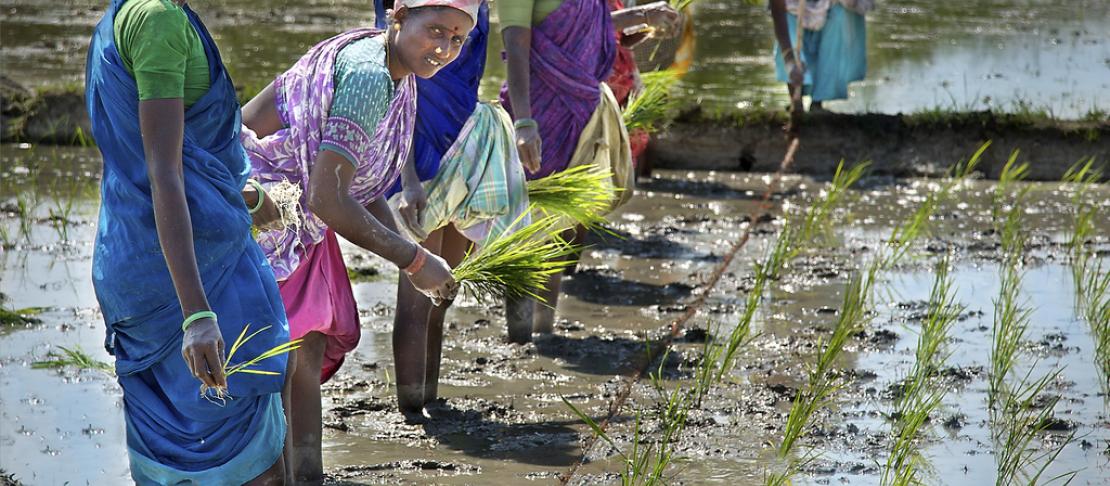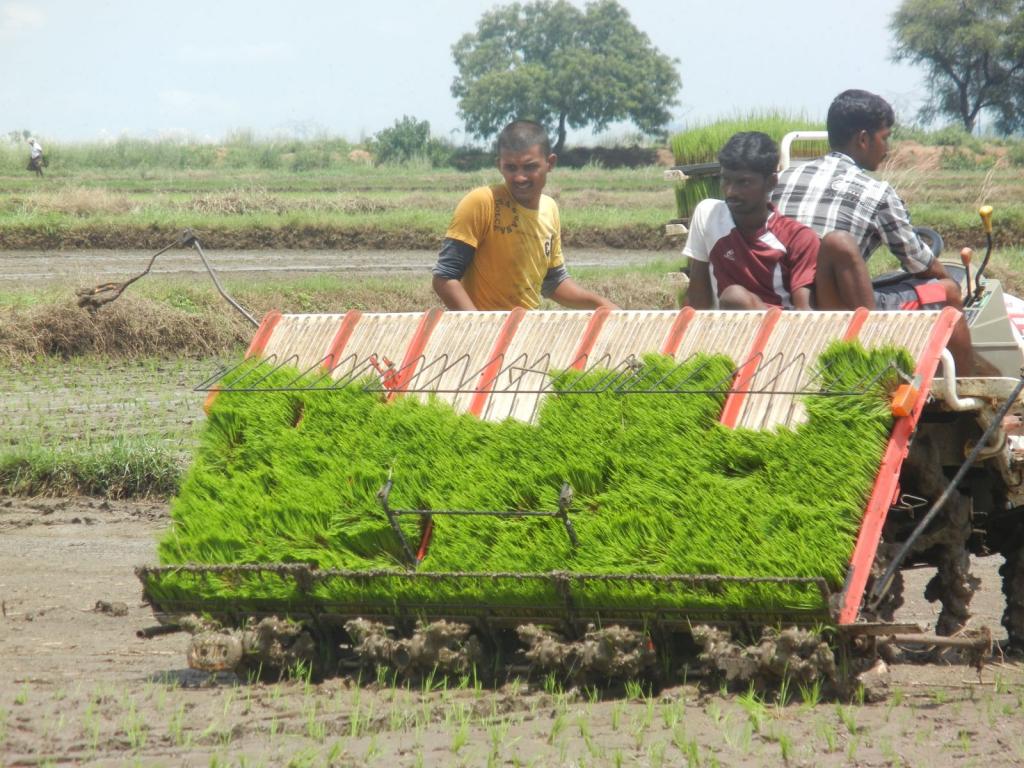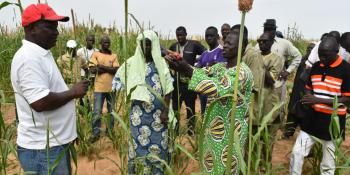Growing rice with less water: case studies from India

Over 25 percent of all rice production in just one of the river basins in India, the Godavari Basin, could be lost to climate change affecting millions of people. A new book titled Climate Change and Agriculture in India: Studies from Selected River Basins brings together years of research to provide a quantitative assessment of how agricultural systems will be affected on account of climate change, and suggests adaptation strategies in three of India’s river basins- the Krishna, the Godavri and the Cauvery.
On the occasion of World Water Day, we are reminded that current and future food production systems hinge on the sustainable management of water resources. Climate change, in the absence of adaptation strategies, could prove particularly devastating to smallholder farmers many of whom subsist on rainfed agriculture.
Speaking at the book's launch in Chennai, India, last month, Prof. M.S. Swaminathan, reiterated the need for joint efforts among researchers and farmers:
“Climate change needs interdisciplinary research to develop appropriate adaptation mechanisms. Research findings through such books and training manuals can help scale up strategies. It is important to educate farmers and develop a cadre of climate risk managers, who can adopt these practices to tackle climate change."
Combining theory with application, this book provides an overview of the likely impacts of climate change and takes into consideration the socio-economic vulnerability along with climate variables such as rainfall and temperature at a river basin level. This makes them more relevant than the earlier models that were limited to the national or state level. The book has used Just-Pope production function model which accounts for both mean and variability in rice yield. The multi goal linear programming model used with adaptation strategies help in both maximizing gross income and minimizing the water use.
Agriculture already faces uncertainty due to increasing regional variations in rainfall and temperature. Innovative practices can help grow rice, the main staple of these river-basins, using less water.
Some of the methods include: direct seeding of rice, Modified System of Rice Intensification and Alternate Wetting and Drying.
Watch a video overview of these rice projects
Direct seeding of rice was practiced during early 1950s when rainfall was more uniform across crop seasons. This method lost its popularity due to advent of new canal systems which provided assured water supply. But now with climatic variability, this techniques is on its way back along with a few supplemental irrigation methods. This approach has reduced production costs by INR 4000 (USD 65) per acre. Less labour is needed and water use can be reduced by up to 30 percent. For instance, in 2012, the drought hit Krishna River Basin saw a massive increase in the area under direct seeding rice from 200 ha to 35,000 ha.

Modified system of rice intensification (MSRI) with machine transplantation: PHOTO: K. Gurava Reddy
Modified system of rice intensification (MSRI) is another approach that we tested. It reduces labour demand due to improved mechanisation. It also improves water utilisation by about 10-15 percent. However, levelling of fields is required with some additional cost and timely sowing. But the cost is insignificant considering the additional yield and income.
Finally we looked at the alternate wetting and drying in rice to reduce water use and improve efficiency. This process increases aeration to the plant roots and improves nutrient supply.
There is no one-size-fits-all solution to the challenges thrown up by climate change. The methods highlighted here are just a few among several adaptation strategies. The bigger focus should be on scaling up adaptation strategies through community groups or farmers’ organisations. Farmers, agriculturalists and irrigation experts need to coordinate better to ensure sustainable success at scale following cluster approach. Developing public-private partnership will also ensure successful scaling out. India which is believed to be a “subsidy state” needs to better target its interventions to ensure that incentives are established now in order to secure food production for the future.
This article is based on research published in the book -'Climate Change and Agriculture in India: Studies from Selected River Basins' by K. Palanisami, C.R. Ranganathan, Udya Sekhar Nagothu and Krishan Reddy Kakumanu, Routledge 2014. This guest blog does not necessarily reflect the views of CCAFS



